|
 | Add on planes - Planes |  |
Vehicles created with Vehicle Simulator are compatible with Fire
Flight, additional vehicles can be downloaded from the Vehicle Simulator
web page and from the Library.
This page shows only vehicles
equipped with water tanks that can be used for fighting fires. |
| C-130 Hercules |
Author: Pascal Dumat &
Thomas Brueckelt |
|
C-130 Hercules from wikipedia
The Lockheed C-130 Hercules is a four-engine turboprop
military transport aircraft designed and built originally by
Lockheed (now Lockheed Martin). Capable of using unprepared
runways for takeoffs and landings, the C-130 was originally
designed as a troop, medevac, and cargo transport aircraft.
The versatile airframe has found uses in a variety of other
roles, including as a gunship (AC-130), for airborne assault,
search and rescue, scientific research support, weather
reconnaissance, aerial refueling, maritime patrol, and aerial
firefighting. It is now the main tactical airlifter for many
military forces worldwide. Over forty variants and versions of
the Hercules, including a civilian one marketed as the
Lockheed L-100, operate in more than 60 nations.
The
C-130 entered service with the U.S. in the 1950s, followed by
Australia and others. During its years of service, the
Hercules family has participated in numerous military,
civilian and humanitarian aid operations. In 2007, the C-130
became the fifth aircraft—after the English Electric Canberra,
B-52 Stratofortress, Tupolev Tu-95, and KC-135 Stratotanker—to
mark 50 years of continuous service with its original primary
customer, in this case, the United States Air Force.[citation
needed] The C-130 Hercules is the longest continuously
produced military aircraft at over 60 years, with the updated
Lockheed Martin C-130J Super Hercules currently being
produced.[4] This great airplane model has been made by Pascal Dumat &
Thomas Brueckelt
|
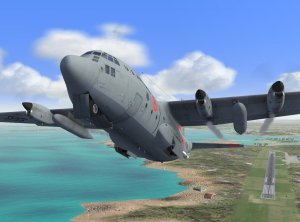
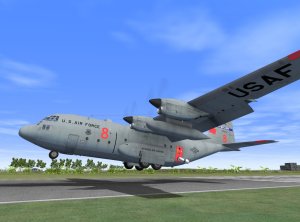
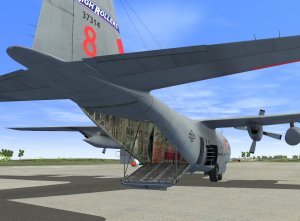
|
|
Download (
7.2 MB ) |
|
|
| The Antonov An-2 |
Author:
Alexey Filatov |
|
An-2 from wikipedia
The Antonov An-2 (Russian nickname: kukuruznik, "maize
farmworker", inherited from the earlier Polikarpov Po-2;
also nicknamed "Annushka" or "Annie")
is a single-engine
biplane utility/agricultural aircraft designed in the USSR in
1946. (USAF/DoD reporting name Type 22, NATO reporting name
Colt.)
The An-2 is used as a light utility transport,
parachute drop aircraft, agricultural work and many other
tasks suited to this large slow-flying biplane.
Its slow
flight and good field performance make it suited for short,
unimproved fields, and some specialized variants have also
been built for cold weather and
other extreme
environments. The Guinness Book of World Records states that
the 45-year production run for the An-2 was for a time the
longest ever, for any
aircraft, but it was recently
exceeded by the Lockheed C-130 Hercules.
An-2LP (Lesopozharnyy
- forest firefighter) - A fire-fighting aircraft with a dumpable
hopper filled with water and/or retardant. An-2PP
(Protivopozharnyy - fire-fighting with water) - A prototype
converted from an An-2V floatplane, with 630 litre (139
Imp.Gal.) water tanks in each float for dropping on fires.
The water tanks could be re-filled in flight, as the aircraft
skimmed the surface of suitable bodies of water.
Prior to
dropping an alkaline wetting agent was added to the water
which was released through the scoops which also picked up the
water to refill the tanks.
SibNIA TVS-2MS - Turboprop conversion of An-2 by Siberian
Aeronautical Research Institute (SibNIA) using 1,100 shp (820
kilowatts) Honeywell TPE331-12UHR engine.
First flown 5
September 2011, Deliveries to the Aerial Forest Protection
Service began in 2014, with six flying by August 2014. These great airplane models
were been made by
Alexey Filatov |
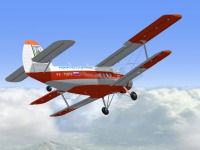
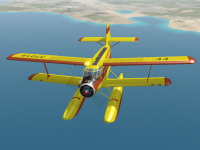
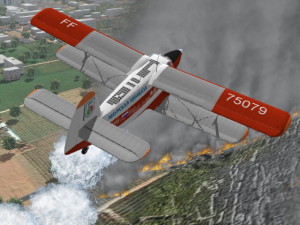
|
|
Download (
3.5 MB ) |
|
|
| Canadair CL-415 |
Author: Pascal Dumat &
Emmanuel Baranger |
|
Canadair CL-415 from wikipedia
The Canadair CL-415, later known as the Bombardier 415, is
an amphibious aircraft from Canada purpose-built as a water
bomber. It is an aircraft designed and built specifically for
aerial firefighting and is based on the company's CL-215. It
is marketed in the United States as the "Superscooper". This great airplane model has been made by Pascal Dumat &
Emmanuel Baranger |
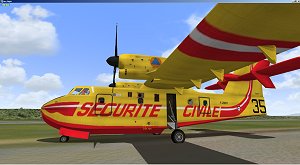 |
|
Download (
4.5 MB ) |
|
|
| Canadair CL-215 |
Author: Pascal Dumat &
Thomas Bruklet |
|
Canadair CL-215 from wikipedia
The Canadair CL-215 (Scooper) was the first model in a
series of firefighting flying boat amphibious aircraft built
by Canadair and later Bombardier. The CL-215 is a twin-engine,
high-wing aircraft designed to operate well at low speeds and
in high gust-loading environments, as are found over forest
fires. This great airplane model has been made with help by Pascal Dumat
&
Thomas Bruklet |
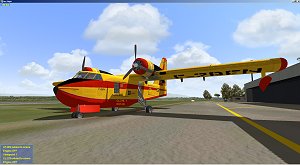 |
|
Download (
5.5 MB ) |
|
|
| Air Tractor AT-802 |
Author: Pascal Dumat &
Pedro Caparros |
|
Air Tractor AT-802 from wikipedia
The Air Tractor AT-802 is an agricultural aircraft that may
also be adapted into fire-fighting or armed versions. It first
flew in the United States in October 1990 and is manufactured
by Air Tractor Inc. The AT-802 carries a chemical hopper
between the engine firewall and the cockpit and another one
under the belly. In the U.S., it is considered a Type III
SEAT, or Single Engine Air Tanker. This great airplane model has been made with help by Pascal Dumat
&
Pedro Caparros |
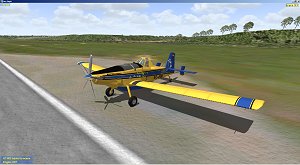 |
|
Download (
2.5 MB ) |
|
|
| At-802 Fire Boss |
Author: Pascal Dumat &
Pedro Caparros |
|
Canadair At-802 Fire Boss from wikipedia
The Canadair CL-215 (Scooper) was the first model in a
series of firefighting flying boat amphibious aircraft built
by Canadair and later Bombardier. The CL-215 is a twin-engine,
high-wing aircraft designed to operate well at low speeds and
in high gust-loading environments, as are found over forest
fires. In its standard configuration, the aircraft utilizes
conventional landing gear (two main wheels and a tail wheel).
However, a number of aircraft have been converted to the Fire
Boss aerial firefighting configuration, which utilizes Wipaire
10000 amphibious floats, so that it can land on a traditional
runway or on water. The Fire Boss can scoop water from a lake
or river for use on a fire. In addition to the 820 US gallons
(3,100 L) standard fuselage-mounted retardant tank, the Fire
Boss can have optional 35 US gallons (130 L) foam tanks in the
floats. Operations with floats installed have been shown to
produce a shorter and narrower retardant drop pattern than
wheeled AT-802s. This great airplane model has been made with help by Pascal Dumat
&
Pedro Caparros |
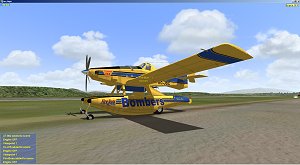 |
|
Download (
2.2 MB ) |
|
|
| Fire Truck |
Author: Pascal Dumat &
Others |
|
Fire Engine from wikipedia
A fire engine (also known in some territories as a fire
apparatus, fire truck, or fire appliance) is a vehicle
designed primarily for firefighting operations. In addition,
many fire departments/fire services often employ their
vehicles for various other uses including emergency medical
services and rescue purposes. The terms "fire engine" and
"fire truck" are often used interchangeably.
The
primary purposes of a fire engine include transporting
firefighters to an incident scene, providing water with which
to fight a fire, and carrying other equipment needed by
firefighters. A typical modern vehicle will carry tools for a
wide range of firefighting and rescue tasks, with common
equipment including ladders, a self-contained breathing
apparatus, ventilating equipment, first aid kits, and
hydraulic rescue tools.
Many fire vehicles are based on
standard vehicle models (although some parts may be upgraded
to cope with the demands of the vehicles' usage). They are
normally fitted with audible and visual warnings, as well as
communication equipment such as two-way radios and mobile
computer technology. This great airplane model has been made with help by Pascal Dumat
&
Others |
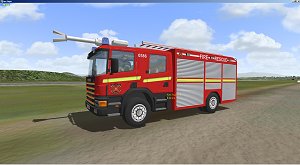 |
|
Download (
4.2 MB ) |
|
|
| Fire Jeep |
Author: Pascal Dumat &
Others |
|
Fire Engine from wikipedia
A fire engine (also known in some territories as a fire
apparatus, fire truck, or fire appliance) is a vehicle
designed primarily for firefighting operations. In addition,
many fire departments/fire services often employ their
vehicles for various other uses including emergency medical
services and rescue purposes. The terms "fire engine" and
"fire truck" are often used interchangeably.
The
primary purposes of a fire engine include transporting
firefighters to an incident scene, providing water with which
to fight a fire, and carrying other equipment needed by
firefighters. A typical modern vehicle will carry tools for a
wide range of firefighting and rescue tasks, with common
equipment including ladders, a self-contained breathing
apparatus, ventilating equipment, first aid kits, and
hydraulic rescue tools.
Many fire vehicles are based on
standard vehicle models (although some parts may be upgraded
to cope with the demands of the vehicles' usage). They are
normally fitted with audible and visual warnings, as well as
communication equipment such as two-way radios and mobile
computer technology. This great airplane model has been made with help by Pascal Dumat
&
Others |
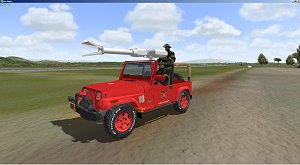 |
|
Download (
1.9 MB ) |
|
|
| Fire Van |
Author: Pascal Dumat &
Others |
|
Fire Engine from wikipedia
A fire engine (also known in some territories as a fire
apparatus, fire truck, or fire appliance) is a vehicle
designed primarily for firefighting operations. In addition,
many fire departments/fire services often employ their
vehicles for various other uses including emergency medical
services and rescue purposes. The terms "fire engine" and
"fire truck" are often used interchangeably.
The
primary purposes of a fire engine include transporting
firefighters to an incident scene, providing water with which
to fight a fire, and carrying other equipment needed by
firefighters. A typical modern vehicle will carry tools for a
wide range of firefighting and rescue tasks, with common
equipment including ladders, a self-contained breathing
apparatus, ventilating equipment, first aid kits, and
hydraulic rescue tools.
Many fire vehicles are based on
standard vehicle models (although some parts may be upgraded
to cope with the demands of the vehicles' usage). They are
normally fitted with audible and visual warnings, as well as
communication equipment such as two-way radios and mobile
computer technology. This great airplane model has been made with help by Pascal Dumat
&
Others |
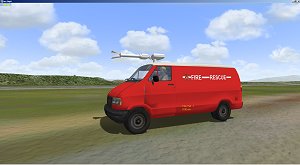 |
|
Download (
1.4 MB ) |
|
|
| Fire Humvee |
Author: Pascal Dumat &
Others |
|
Fire Engine from wikipedia
A fire engine (also known in some territories as a fire
apparatus, fire truck, or fire appliance) is a vehicle
designed primarily for firefighting operations. In addition,
many fire departments/fire services often employ their
vehicles for various other uses including emergency medical
services and rescue purposes. The terms "fire engine" and
"fire truck" are often used interchangeably.
The
primary purposes of a fire engine include transporting
firefighters to an incident scene, providing water with which
to fight a fire, and carrying other equipment needed by
firefighters. A typical modern vehicle will carry tools for a
wide range of firefighting and rescue tasks, with common
equipment including ladders, a self-contained breathing
apparatus, ventilating equipment, first aid kits, and
hydraulic rescue tools.
Many fire vehicles are based on
standard vehicle models (although some parts may be upgraded
to cope with the demands of the vehicles' usage). They are
normally fitted with audible and visual warnings, as well as
communication equipment such as two-way radios and mobile
computer technology. This great airplane model has been made with help by Pascal Dumat
&
Others |
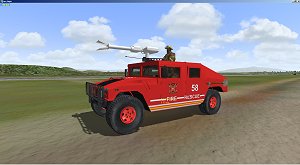 |
|
Download (
1.8 MB ) |
|
|
|
|
